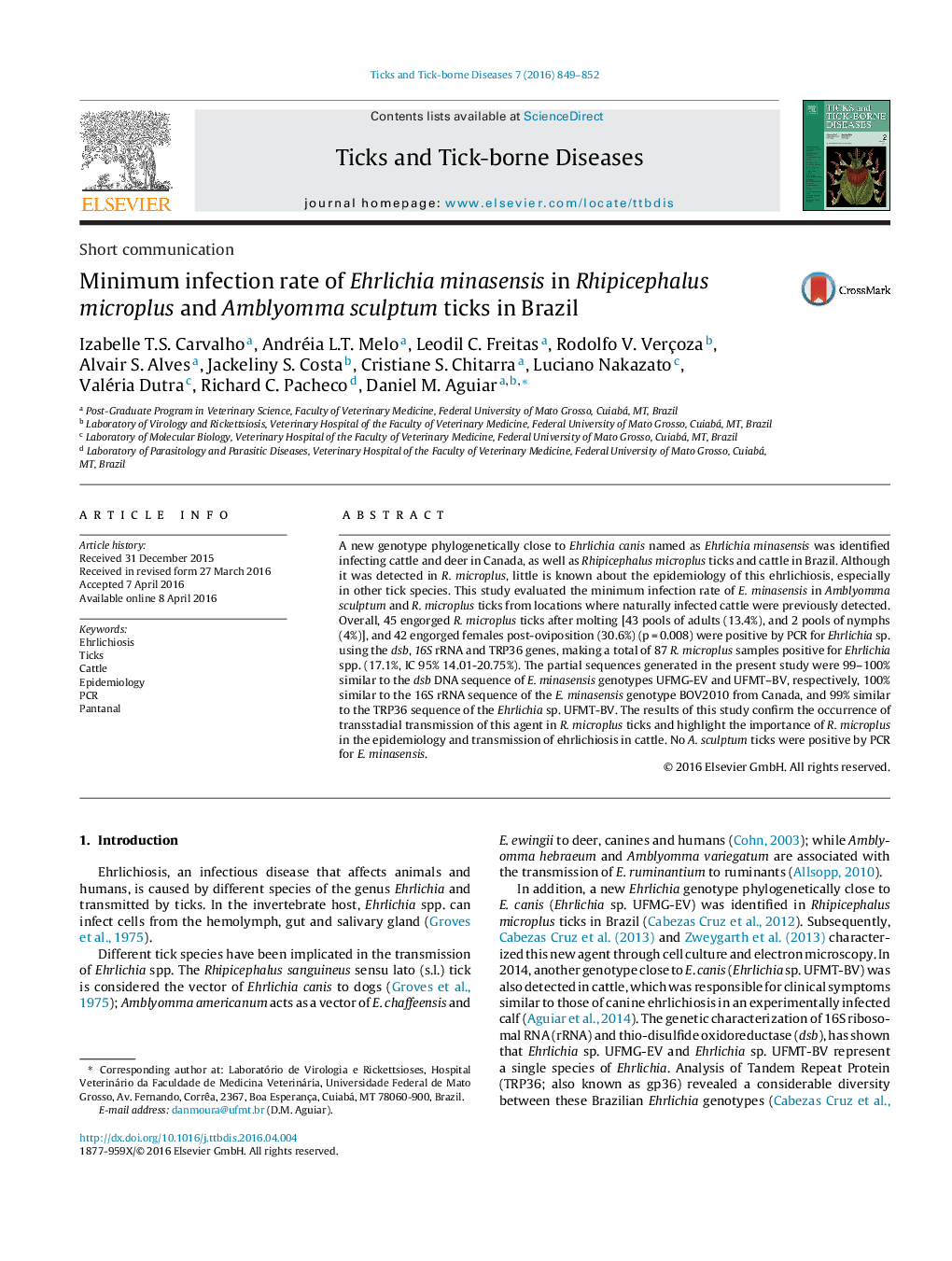| Article ID | Journal | Published Year | Pages | File Type |
|---|---|---|---|---|
| 5546401 | Ticks and Tick-borne Diseases | 2016 | 4 Pages |
A new genotype phylogenetically close to Ehrlichia canis named as Ehrlichia minasensis was identified infecting cattle and deer in Canada, as well as Rhipicephalus microplus ticks and cattle in Brazil. Although it was detected in R. microplus, little is known about the epidemiology of this ehrlichiosis, especially in other tick species. This study evaluated the minimum infection rate of E. minasensis in Amblyomma sculptum and R. microplus ticks from locations where naturally infected cattle were previously detected. Overall, 45 engorged R. microplus ticks after molting [43 pools of adults (13.4%), and 2 pools of nymphs (4%)], and 42 engorged females post-oviposition (30.6%) (p = 0.008) were positive by PCR for Ehrlichia sp. using the dsb, 16S rRNA and TRP36 genes, making a total of 87 R. microplus samples positive for Ehrlichia spp. (17.1%, IC 95% 14.01-20.75%). The partial sequences generated in the present study were 99-100% similar to the dsb DNA sequence of E. minasensis genotypes UFMG-EV and UFMT-BV, respectively, 100% similar to the 16S rRNA sequence of the E. minasensis genotype BOV2010 from Canada, and 99% similar to the TRP36 sequence of the Ehrlichia sp. UFMT-BV. The results of this study confirm the occurrence of transstadial transmission of this agent in R. microplus ticks and highlight the importance of R. microplus in the epidemiology and transmission of ehrlichiosis in cattle. No A. sculptum ticks were positive by PCR for E. minasensis.
